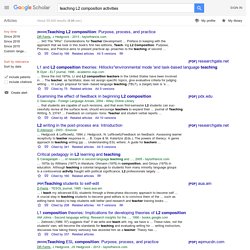

Books and Articles by Stephen D Krashen. Colorín Colorado. In content-area courses, English language learners (ELLs) have a double challenge: they must learn language and content at the same time.
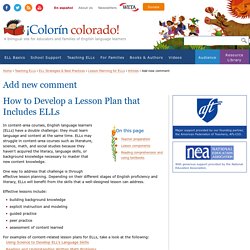
ELLs may struggle in content-area courses such as literature, science, math, and social studies because they haven't acquired the literacy, language skills, or background knowledge necessary to master that new content knowledge. One way to address that challenge is through effective lesson planning. Depending on their different stages of English proficiency and literacy, ELLs will benefit from the skills that a well-designed lesson can address. Effective lessons include: building background knowledgeexplicit instruction and modelingguided practicepeer practiceassessment of content learned For examples of content-related lesson plans for ELLs, take a look at the following: Teacher-student interactions, as well as peer interactions, are critical for learning. Teacher preparation Once you get started, survey your target content to: Lesson components Writing 1. WH- Questions Worksheets: 7 Activities with Who, What, When, Where and Why Questions - ALL ESL. WH- Questions Worksheets: Who, What, When, Where and Why Questions Who, what, when, where and why.
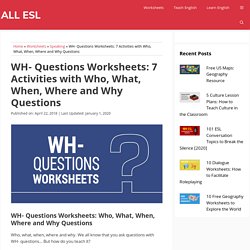
We all know that you ask questions with WH- questions… But how do you teach it? Spanish Children's Stories - The Spanish Experiment. Well-known children's stories translated into Spanish and spoken by a native Spanish speaker.
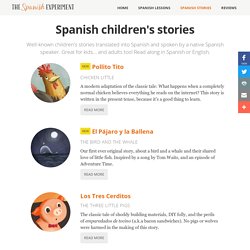
Great for kids... and adults too! Read along in Spanish or English. New Pollito Tito Chicken Little A modern adaptation of the classic tale: What happens when a completely normal chicken believes everything he reads on the internet? Read more New El Pájaro y la Ballena The Bird and the Whale Our first ever original story, about a bird and a whale and their shared love of little fish. Read more Los Tres Cerditos The Three Little Pigs The classic tale of shoddy building materials, DIY folly, and the perils of emparedados de tocino (a.k.a bacon sandwiches). Read more Ricitos de Oro y Los Tres Osos. How are you feeling - English ESL Worksheets.
Learning Dynamics - Teach Your Child to Read in 4 Weeks – 4 Weeks To Read.
Language Nuances. Feedback - How to give it and how to receive it. Feedback is an incredibly useful tool to ensure that a workforce performs to the optimum possible standard.

Discussing issues and shortcomings allows an indication of performance and progression, as well as functioning as a problem-solving tool to bring you and your workforce or co–workers closer to your goals. However, feedback can generate fear, hostility and misinformation if carried out incorrectly, devaluing the process entirely. Here we provide some valuable tips on how to present, and how to receive, feedback with the aim of improving long-term career development. When giving feedback: 1) Be positive: Realise when giving feedback that criticism hurts, and that for this reason it should be delivered in as positive a manner as possible. 2) Be specific: Rather than exaggerating problems or speaking in broad terms about failings, it is far more productive to select key areas of focus and explain clearly how tasks could have been performed more effectively.
r5. Writing Clearly: An Editing Guide (second edition) Janet Lane and Ellen Lange (1999) Boston: Heinle & Heinle Pp. xxiii + 294 + glossary ISBN 0-8384-0949-0 (paper) US $29.95 Although there has been a trend back toward legitimizing formal teaching of grammar, much second-language writing research indicates that explicit, analytical instruction in grammar using drills and exercises without any discourse context is not always effective in getting students to write standard academic English [1].
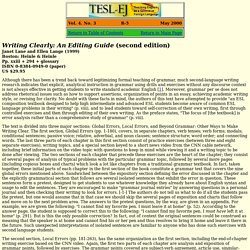
Moreover, grammar per se does not address rhetorical issues such as how to support assertions, organization of points in an essay, achieving academic writing style, or revising for clarity. The text is divided into three major sections: Global Errors, Local Errors, and Beyond Grammar: Other Ways to Make Writing Clear. The second section, Local Errors (pp. 181-263), has the same organization as the first section, including the end-of-chapter writing exercise based on the CNN video. End Note Reference. Scholar. Scholar. Cite Advanced search Find articles e.g., "PJ Hayes" or McCarthy e.g., J Biol Chem or Nature e.g., 1996 ArticlesCase lawProfiles My profileMy libraryAlertsMetrics Advanced search Settings Sign in Sign in Articles Scholar About 55,400 results (0.04 sec) My profileMy library Any timeSince 2019Since 2018Since 2015 Sort by relevanceSort by date include patentsinclude citations Create alert [BOOK][B] Teaching L2 composition: Purpose, process, and practice DR Ferris, J Hedgcock - 2013 - taylorfrancis.com … 343 The “Who”: Considerations for Teacher Development … Preface In keeping with the approach that we took in this book's first two editions, Teach- ing L2 Composition: Purpose, Process, and Practice aims to present practical ap- proaches to the teaching of second … Cited by 199 Related articles All 5 versions View as HTML [PDF] researchgate.net L1 and L2 composition theories: Hillocks''environmental mode 'and task-based language teaching B Dyer - ELT journal, 1996 - academic.oup.com [PDF] pdx.edu [PDF] aua.am.
